WATERS OF LIFE
LIFE UNDERWATER
BENTHOS - DISTRIBUTION
![]() FLASH PLAYER IS REQUIRED TO SEE THE CONTENT OF THIS PAGE
FLASH PLAYER IS REQUIRED TO SEE THE CONTENT OF THIS PAGE
Benthic organisms live at the bottom of various water bodies, in deep areas and in the littoral zone.
They can live in different environmental conditions because they occupy different niches.

The littoral zone is home to a greater diversity and abundance of benthic organisms that are present in deeper areas.
This page contains videos that require Javascript and Adobe Flash Player to be activated. If you wish not to activate these functions, we offer pictures from the original videos.

VIDEO - 0 min 36 s
When the water warms up in the spring, insect larvae begin their metamorphosis. They start to emerge in late April. Dense clouds of mayflies can sometimes be observed, especially towards the end of the day.
This page contains videos that require Javascript and Adobe Flash Player to be activated. If you wish not to activate these functions, we offer pictures from the original videos.
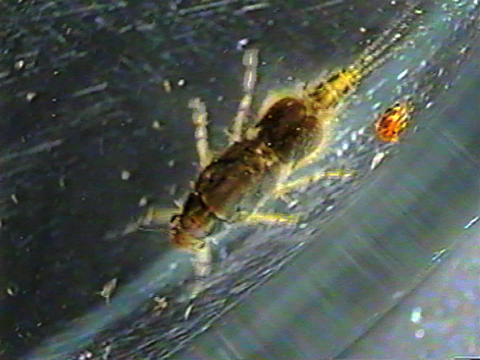
VIDEO - 0 min 07 s
Mayfly larvae move quickly, and can climb up plants.
This page contains videos that require Javascript and Adobe Flash Player to be activated. If you wish not to activate these functions, we offer pictures from the original videos.
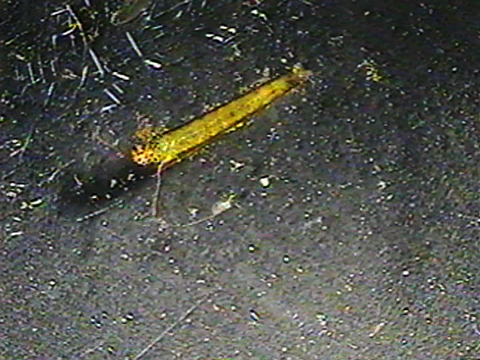
VIDEO - 0 min 25 s
Many caddisfly larvae move around without leaving the case they have built. The case doesn’t stop them from moving at a high speed.
This page contains videos that require Javascript and Adobe Flash Player to be activated. If you wish not to activate these functions, we offer pictures from the original videos.
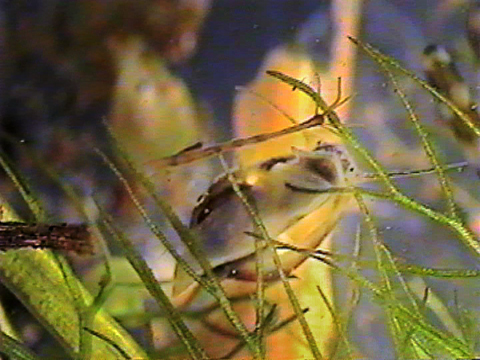
VIDEO - 0 min 28 s
Aquatic gastropods have eyes at the bottom of their tentacles, unlike terrestrial gastropods (snails) that carry them at the end of their tentacles.
This page contains videos that require Javascript and Adobe Flash Player to be activated. If you wish not to activate these functions, we offer pictures from the original videos.
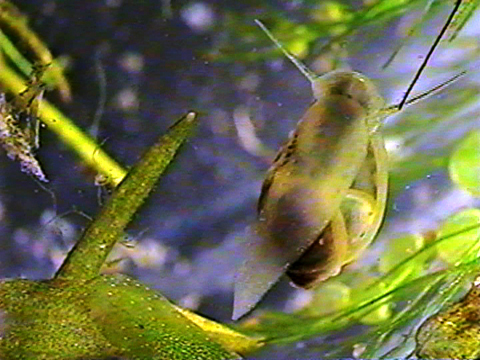
VIDEO - 0 min 38 s
As they move along the substrate, gastropods deposit a layer of mucus with their foot.
This page contains videos that require Javascript and Adobe Flash Player to be activated. If you wish not to activate these functions, we offer pictures from the original videos.
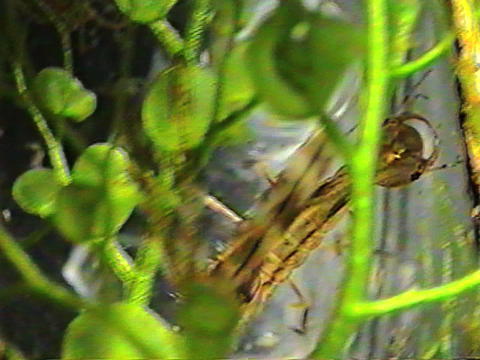
VIDEO - 0 min 09 s
Diving beetles are fierce predators that swim rapidly after their prey.
This page contains videos that require Javascript and Adobe Flash Player to be activated. If you wish not to activate these functions, we offer pictures from the original videos.
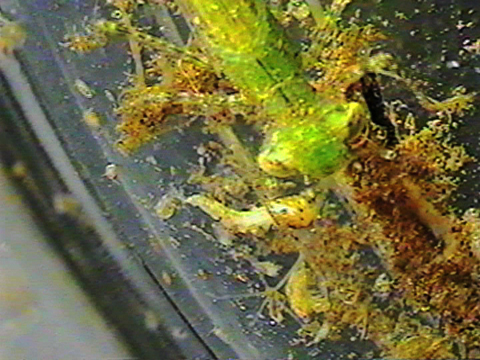
VIDEO - 0 min 15 s
Damselfly larvae swim by propulsion and by undulating their bodies. They can also move around by walking.
This page contains videos that require Javascript and Adobe Flash Player to be activated. If you wish not to activate these functions, we offer pictures from the original videos.
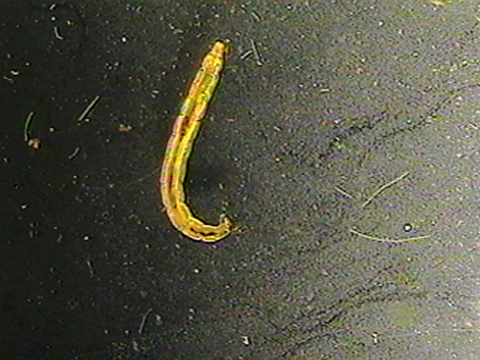
VIDEO - 0 min 21 s
Bloodworms swim by twisting their bodies. They support themselves on prolegs located at the front of the thorax and the end of the abdomen.
This page contains videos that require Javascript and Adobe Flash Player to be activated. If you wish not to activate these functions, we offer pictures from the original videos.

VIDEO - 0 min 16 s
Hemipterans in the family Notonectidae have long legs that allow them to swim well.
This page contains videos that require Javascript and Adobe Flash Player to be activated. If you wish not to activate these functions, we offer pictures from the original videos.

VIDEO - 0 min 20 s
Hemipterans in the family Belostomatidae are rather large, measuring between 20 and 60 mm in length. Their strong front legs are used to catch and hold prey.
This page contains videos that require Javascript and Adobe Flash Player to be activated. If you wish not to activate these functions, we offer pictures from the original videos.
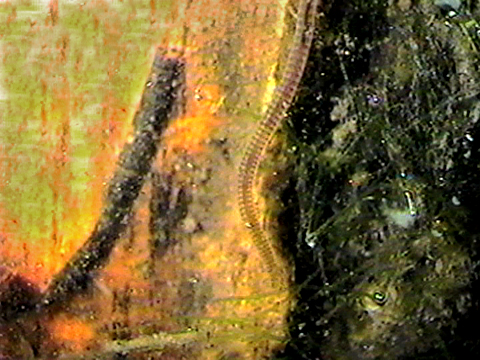
VIDEO - 0 min 19 s
Oligochaetes swim by contracting their bodies.
This page contains videos that require Javascript and Adobe Flash Player to be activated. If you wish not to activate these functions, we offer pictures from the original videos.
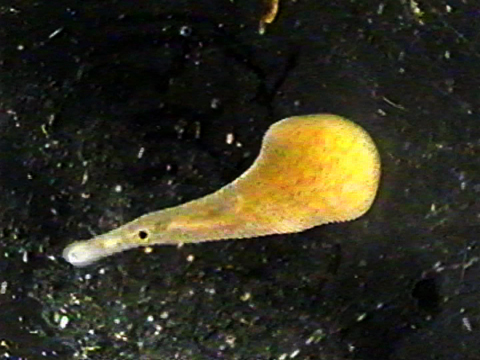
VIDEO - 0 min 10 s
Like oligochaetes, leeches are classified as segmented worms (annelids), but they lack bristles.
This page contains videos that require Javascript and Adobe Flash Player to be activated. If you wish not to activate these functions, we offer pictures from the original videos.

VIDEO - 0 min 12 s
Leeches move using two suckers located at each end of their body.
This page contains videos that require Javascript and Adobe Flash Player to be activated. If you wish not to activate these functions, we offer pictures from the original videos.
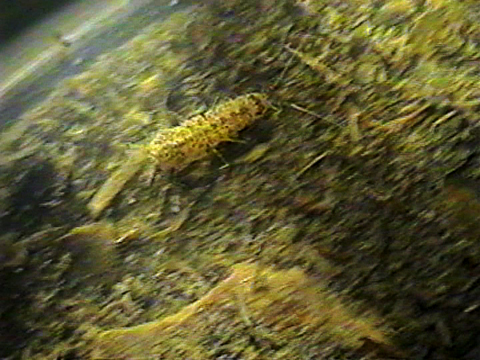
VIDEO - 0 min 10 s
Isopods move rapidly along the lake bottom.
This page contains videos that require Javascript and Adobe Flash Player to be activated. If you wish not to activate these functions, we offer pictures from the original videos.

VIDEO - 0 min 10 s
Amphipods use their front legs to cling to the substrate, hold food and aerate the gills at the base of their legs. Their back legs are used for locomotion.
